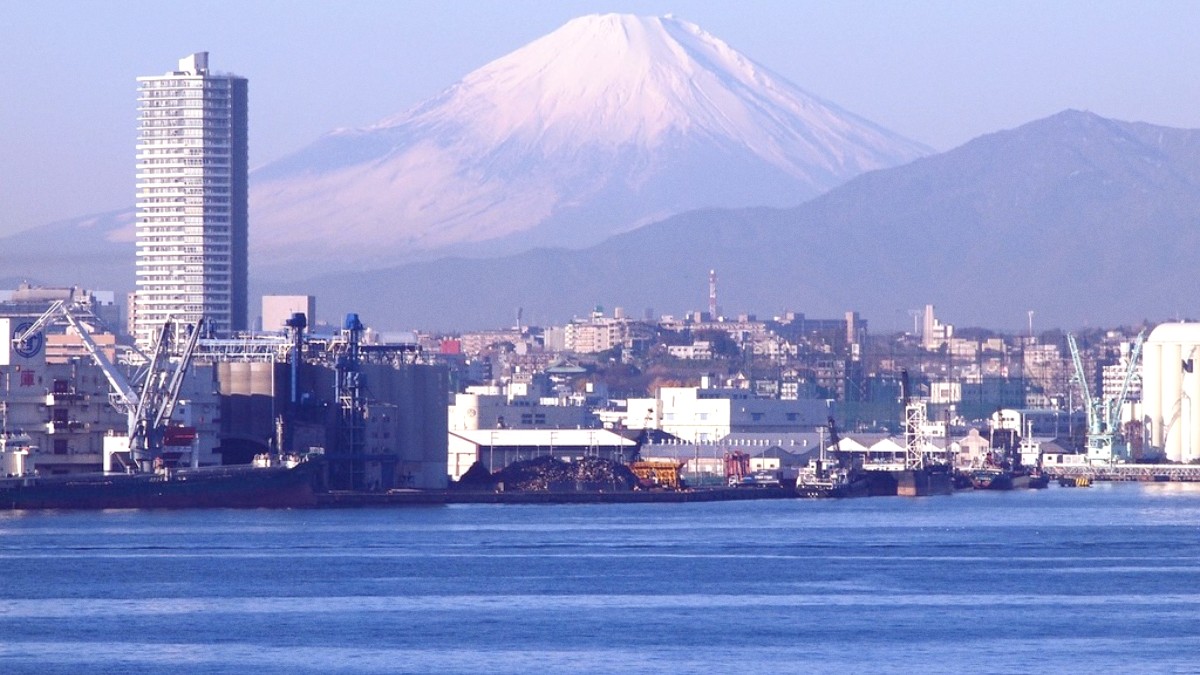
South Of Tokyo, Japan
Yokohama offers distinct charm throughout the year, with each season presenting its own advantages and considerations. Layering is a practical strategy regardless of the time of year due to temperature fluctuations.
Climate patterns throughout the year:
Spring (March - May): Mild and comfortable (10°C to 20°C / 50°F to 68°F), low humidity. Cherry blossom season (late March to early April) brings delicate pink and white flowers.
Summer (June - August): Hot and humid (25°C to 30°C / 77°F to 86°F). June marks the start of the rainy season (Tsuyu). August can see intense heat.
Autumn (September - November): Mild and dry (15°C to 25°C / 59°F to 77°F). Autumn foliage (late November to early December) displays brilliant reds and yellows. September can still see the tail end of typhoon season.
Winter (December - February): Cold but generally dry (0°C to 10°C / 32°F to 50°F). Snowfall is rare. Winter illuminations add a festive glow.
Cherry Blossom Viewing: Late March to early April is perfect for witnessing cherry blossoms in Sankeien Garden.
Outdoor Activities & Gardens: Spring and Autumn conditions are most comfortable for walking tours, cycling, or exploring gardens.
Festivals & Events: Check local event calendars before your trip for summer fireworks, seasonal markets, or Chinese New Year celebrations.
Traveling during the shoulder season (May or late September/early October) often yields the best balance of good weather, fewer crowds, and better prices.
Expect hot & humid conditions
Wear lightweight clothing. Drink plenty of water. Seek shade frequently.
Risk of heatstroke. Sudden thunderstorms during August.
August to October (Peak in September)
Monitor weather forecasts. Follow local advisories.
Heavy rain, strong winds. Possible disruption to flights and train services.
Cold but generally dry
Wear insulated coats, sweaters, and thermal underwear.
Air is dry. Excellent visibility for distant views, including Mount Fuji on clear days.
Spring transforms Yokohama into a spectacle of cherry blossoms. From late March to early April, the city's parks and waterfront areas are adorned with delicate pink and white flowers. This period provides pleasant weather with mild temperatures and low humidity, ideal for outdoor exploration.
Autumn brings a welcome return to mild and dry conditions. Temperatures are comfortable, and clear skies are common. Late November to early December features autumn foliage, with trees in gardens displaying brilliant reds, oranges, and yellows. This season is popular for nature appreciation.
Late March to early April, blooms in parks.
Late November to early December, colorful landscapes.
displays along the bay.
Festive lights around Minato Mirai.
Excellent visibility for distant sights, including Mount Fuji.
Japan maintains clear guidelines for visitors, with many nationalities benefiting from visa exemption programs for short stays. Confirm your specific requirements before travel.
Japan operates a comprehensive visa exemption program for short-term stays, usually up to 90 days, for citizens of many countries (e.g., US, Canada, EU, Australia, NZ, SK, Singapore) for tourism, business meetings, or transit. For others, or for longer/specific stays (work, study), a visa application through a Japanese embassy or consulate is necessary.
All travelers need a valid passport (valid for the entire stay), a return ticket or proof of onward travel, and evidence of sufficient funds. If a visa is required, the completed application form and passport-sized photos are also necessary. For some visa types, an invitation letter or guarantor letter is needed.
Costs vary widely based on travel style. Japan's currency is the Japanese Yen (JPY, ¥). ATMs at convenience stores (7-Eleven, Lawson, FamilyMart) and post offices readily accept international cards. Credit cards are widely accepted, but cash remains useful for smaller establishments and local transport.
Yokohama, like the rest of Japan, maintains high standards of public health and safety, making it a secure destination for travelers.
No specific vaccinations are required for entry to Japan from most countries. Ensure routine vaccinations are up-to-date. Consult a healthcare professional 4-6 weeks prior to your trip for personalized recommendations. Common concerns like seasonal allergies and heatstroke during summer should be noted.
Access to healthcare is excellent, with modern hospitals and clinics. Many large hospitals offer English-speaking staff or translation services. Emergency numbers are Police: 110 and Fire/Ambulance: 119.
Tap water in Yokohama is safe to drink. Food hygiene standards throughout Japan are very high. Eating street food is generally safe, especially from busy stalls preferred by locals.
No need for water purification. Wash hands frequently.
Traveler's diarrhea is uncommon. Food-borne illness risk is low.
Japan ranks among the safest countries, with low crime rates. Yokohama reflects this, offering a very safe environment. Violent crime is rare. Petty crime is uncommon.
No specific neighborhoods require avoidance. Be generally aware of surroundings.
Pickpocketing is rare but can happen in crowded tourist areas.
Japan is earthquake-prone. Most are minor. Typhoons are possible Aug-Oct. Coastal areas carry a tsunami risk. Japanese infrastructure handles most incidents well.
Familiarize with "Drop, Cover, Hold On." Use the "Safety tips" app.
Heed tsunami warnings; move to higher ground immediately.
| Category | Details | Affiliate/Tip |
|---|---|---|
| Emergency Numbers | Police: 110; Fire/Ambulance: 119. Operators can often transfer to English-speaking lines. | Note these numbers and your location clearly. |
| Travel Insurance | Comprehensive policy covering medical, evacuation, trip cancellation, and lost luggage. | Consider World Nomads or SafetyWing. For flight compensation: AirHelp. |
| Safety Gear & Apps | Water filtration, first aid, anti-theft bags. "Safety tips" app from JNTO. | Shop: LifeStraw, Adventure Medical Kits, Pacsafe. |